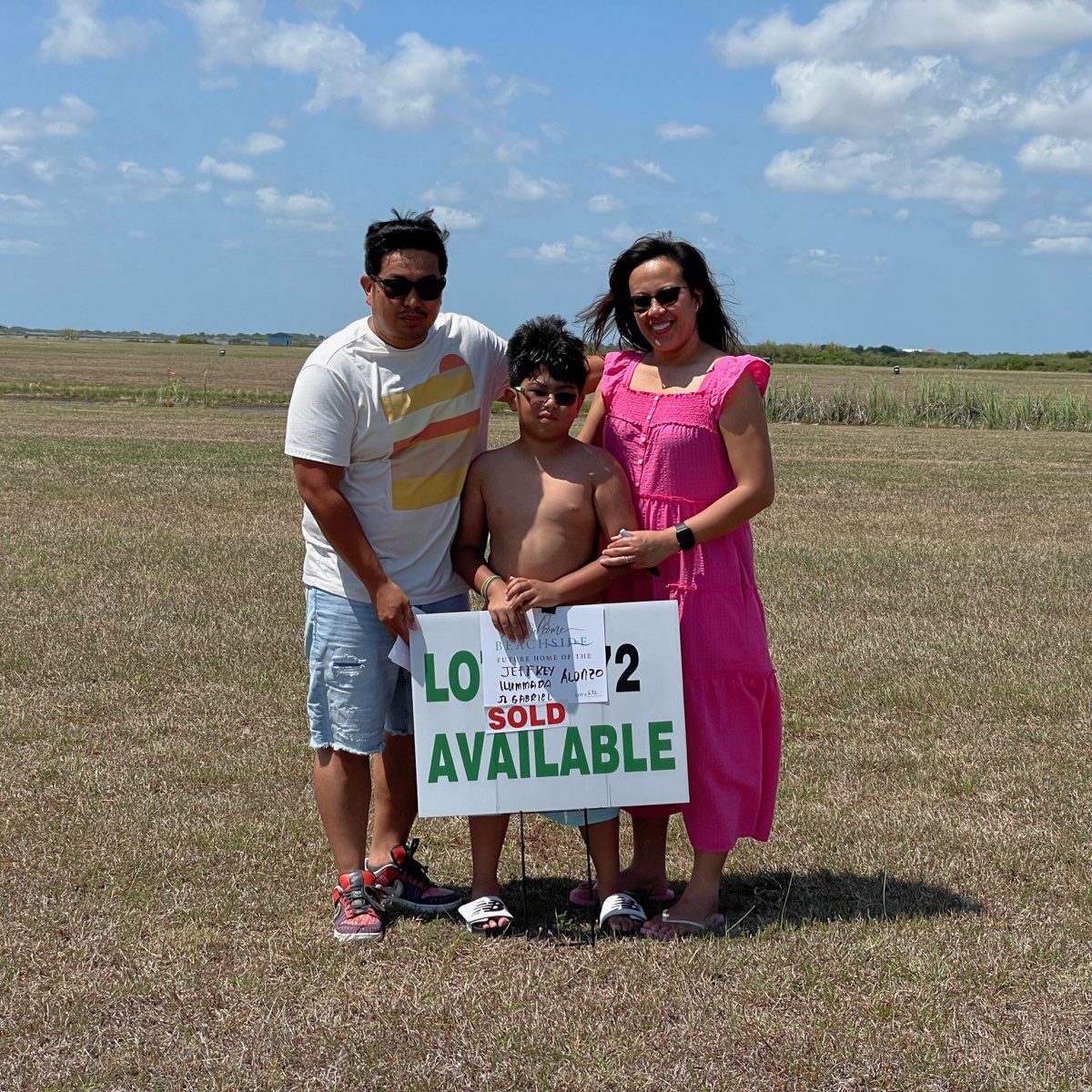Property owner stories

MELISSA
"The hardest part was choosing the perfect spot with so many choices."

AMANDA
"I thought it was too good to be true so I had to come see for myself. We found the perfect lot for an amazing price!"

SLIM & CRICKET
"We found a bay front lot at a price we could never have imagined! Best decision ever!"

Jeffery & IMMELDA
"We will pass this property on to our son someday. We're not in a rush to build but we're happy to have secured a wonderful homesite."
FOREVER VIEWS
Every build ready homesite at Beachside has a unique personality. Relax on the serene and peaceful Turtle Bay side or choose bold and wonderful Matagorda Bay views. Whatever you choose you'll experience waterfront living at it's best, everyday!
FOREVER VIEWS
Every build ready homesite at Beachside has a unique personality. Relax on the serene and peaceful Turtle Bay side or choose bold and wonderful Matagorda Bay views. Whatever you choose you'll experience waterfront living at it's best, everyday!
Bay ACCess
Three pristine bays provide unparaleled fun and recreation. Fishing, Boating, Kayaking, bird watching, there is always something to do.

Gated Community
Secure. Safe. Private.
Relax knowing that the riff-raff doesn't have a gate code.
Pool, Piers, People
Join a vibrant community of active people who love the outdoors. There's always something happening at Beachside.
Secure Storage
Our low restriction Property Owners Association provides world class amenities including secure boat and RV storage.
Property owner stories
Sunsets and Kayaking with Friends!
We are looking forward to retiring at Beachside in the next few years! There is so much to do and great people to do it with. Plus, our Laguna lot is so beautiful with long views over the water and we can kayak right from our back yard. Sunsets with a glass of wine are in our future!
Jenn & Marty Rachford
Property Owner
A Great Investment in Our Future
Our son is eight years old and, someday, we'll pass this property down to him. In the mean time, we are planning a beutiful beach house for our weekends and vacations. We're not in a rush to build but we're happy to have secured a wonderful homesite.
Jeffery & Immelda
Property Owner
Choosing Our Lot was the Hardest Part!
Some of our friends suggested we take a look at Beachside, we fell in love immediately. The hardest part was choosing the perfect lot with so many choices. We're excites that we got in at the start of something so exciting!
Melissa Hagar
Property Owner
